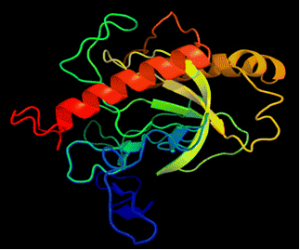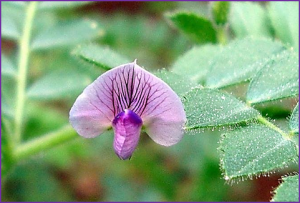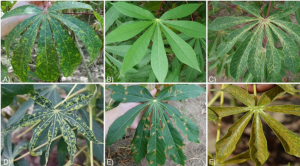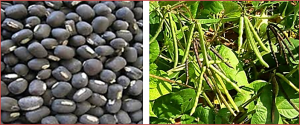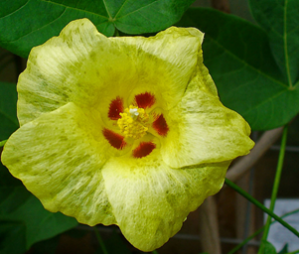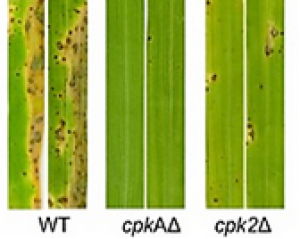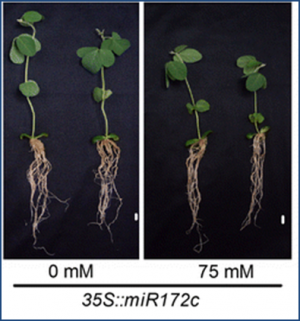Inorganic pyrophosphorylase is essential in catalyzing the hydrolysis of pyrophosphate to inorganic phosphate during plant growth. Here, we report the changes of physiological osmolytes and differentially expression genes in the transgenic rice overexpressing a soluble inorganic pyrophosphatase gene ThPP1 of Thellungiella halophila in response to AS. Analyses showed that the ThPP1 gene was a PPase family I member which is located to the cytoplasm.
Botrytis cinerea, a necrotrophic pathogenic fungus, attacks many crops including potato and tomato. Major genes for complete resistance to B. cinerea are not known in plants, but a few quantitative trait loci have been described in tomato. Loss of function of particular susceptibility (S) genes appears to provide a new source of resistance to B. cinerea in Arabidopsis.
Iron deficiency is a major problem in both developing and developed countries, and much of this can be attributed to insufficient dietary intake. Over the past decades several measures, such as supplementation and food fortification, have helped to alleviate this problem. However, their associated costs limit their accessibility and effectiveness, particularly amongst the financially constrained. A more affordable and sustainable option that can be implemented alongside existing measures is biofortification.
Cassava is the third largest source of carbohydrates for human food in the world but is vulnerable to virus diseases, which threaten to destabilize food security in sub-Saharan Africa. Novel methods of cassava disease detection are needed to support improved control which will prevent this crisis. Image recognition offers both a cost effective and scalable technology for disease detection. New deep learning models offer an avenue for this technology to be easily deployed on mobile devices.
Vigna mungo (Urdbean) is cultivated in the tropical and sub-tropical continental region of Asia. It is not only important source of dietary protein and nutritional elements, but also of immense value to human health due to medicinal properties. Yellow mosaic disease caused by Mungbean Yellow Mosaic India Virus is known to incur huge loss to crop, adversely affecting crop yield.
Aflatoxin contamination, caused by fungal pathogen Aspergillus flavus, is a major quality and health problem delimiting the trade and consumption of groundnut (Arachis hypogaea L.) worldwide. RNA-seq approach was deployed to understand the host-pathogen interaction by identifying differentially expressed genes (DEGs) for resistance to in-vitro seed colonization (IVSC) at four critical stages after inoculation in J 11 (resistant) and JL 24 (susceptible) genotypes of groundnut.
Long-distance insular dispersal is associated with divergence and speciation because of founder effects and strong genetic drift. The cotton tribe (Gossypieae) has experienced multiple trans-oceanic dispersals, generating an aggregate geographic range that encompasses much of the tropics and subtropics worldwide. Two genera in the Gossypieae, Kokia and Gossypioides, exhibit a remarkable geographic disjunction, being restricted to the Hawaiian Islands and Madagascar/East Africa, respectively.
The cAMP-Protein Kinase A signaling, anchored on CpkA, is necessary for appressorium development and host penetration, but indispensable for infectious growth in Magnaporthe oryzae. In this study, we identified and characterized the gene encoding the second catalytic subunit, CPK2, whose expression was found to be lower compared to CPKA at various stages of pathogenic growth in M. oryzae. Deletion of CPK2 caused no alterations in vegetative growth, conidiation, appressorium formation, or pathogenicity.
Effective weed control can protect yields of cassava (Manihot esculenta) storage roots (Doll and Piedrahita Cañola, 1978). Farmers could benefit from using herbicide with a tolerant cultivar. We applied traditional transgenesis and gene editing to generate robust glyphosate tolerance in cassava. By comparing promoters regulating expression of transformed 5-enolpyruvylshikimate-3-phosphate synthase (EPSPS) genes with various paired amino acid substitutions
Here we showed that miR172c is greatly induced by salt stress in soybean. Overexpression of miR172c and knockdown of miR172c activity resulted in substantially increased and reduced root sensitivity to salt stress, respectively. Furthermore, we show that the target gene NNC1 (Nodule Number Control 1) of miR172c was downregulated by salt stress. The transgenic roots overexpressing or knocking down NNC1 expression also exhibited the altered root sensitivity to salt stress.


 Curently online :
Curently online :
 Total visitors :
Total visitors :
